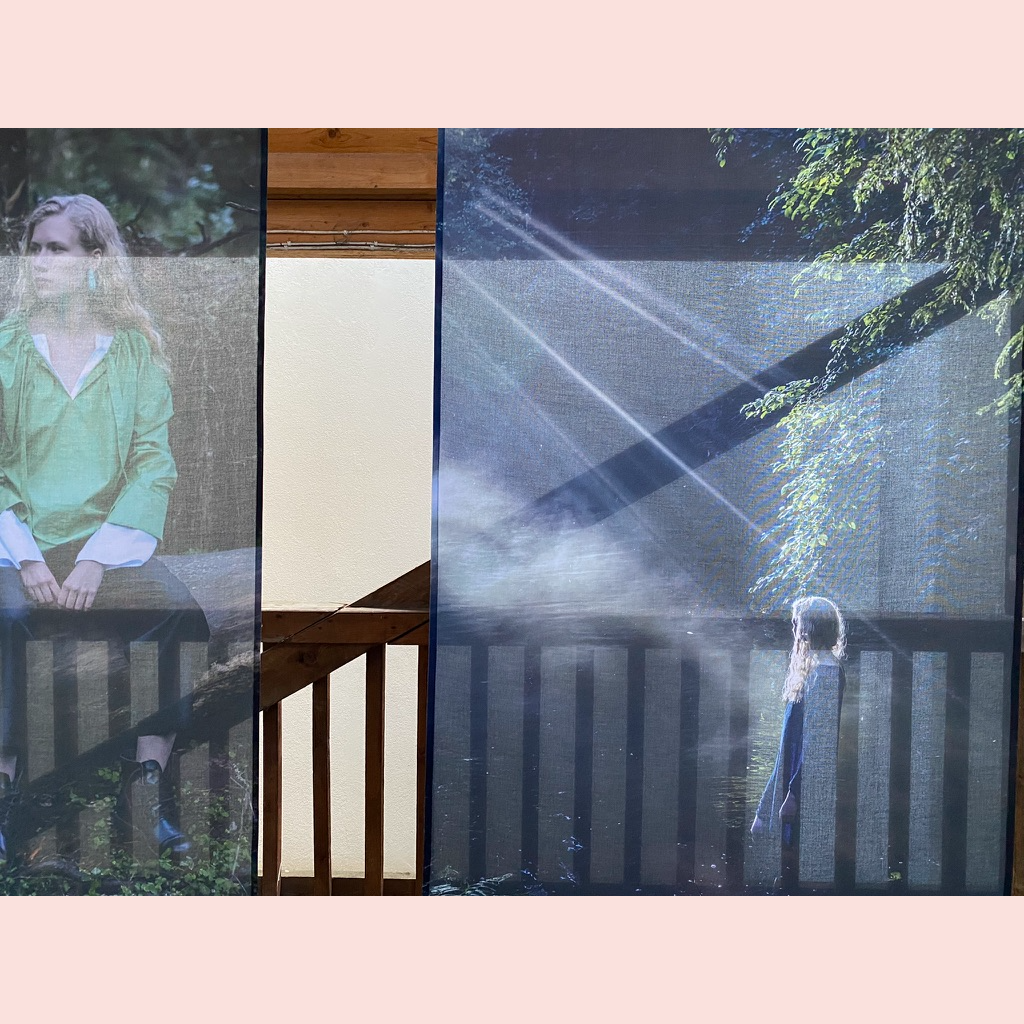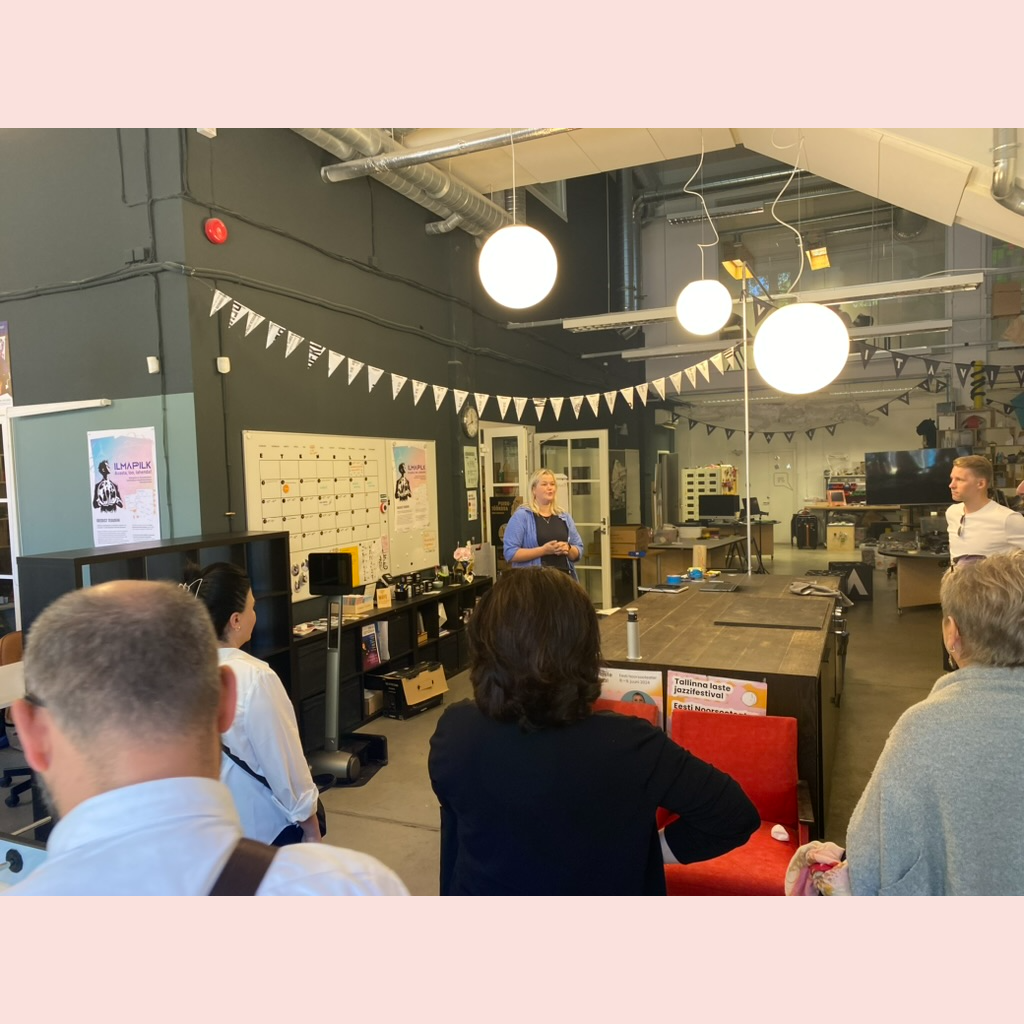Mariam Khurtsilava – Culture Moves Europe grantee
– What motivated you to apply for the Culture Moves Europe Programme?
– Having experience for more than 5 years as a project manager in Creative Industries (CCIs) and Web Development fields separately, I was eager to find an opportunity, which would allow me to merge my interests to further explore the connection between Digital Technologies and the CCIs. Gladly, I always try my best to find opportunities for my professional development and plans and thus, I am familiar with European Union Programmes in the field targeting Georgia. When I found the information on the Creative Europe Culture Moves Europe Programme Individual Mobility Grant via LinkedIn, I saw how my project idea could work in compliance with the programme requirements. So, I did not hesitate, contacted my partner in Estonia, submitted the project idea and got awarded.
– How did the funding from Creative Europe impact the development and execution of your project?
– This cross-sectoral project idea has been on my mind for more than a year already, but I was not able to implement it due to the financial restraints. My project was partly online for the preparation and the article elaboration parts, however, without being able to travel and stay in Estonia for a month, I would not have gotten the information I needed and thus, would not be able to achieve my project KPIs. So, the Creative Europe funding enabled me to meet with Crafts and Design representatives at their workplaces/studios, to conduct interviews and network with them, to attend design events, and generally to get familiar with the CCI scene in Estonia. Thus, the funding was essential for my project implementation.
– What were some of the key challenges you faced during your project, and how did you overcome them?
– My project partner – Creative Estonia is one of the prominent business support organisations (BSOs) in Estonia with vast experience in the Creative Industries, particularly in supporting Crafts and Design small and medium enterprises (SMEs). Our collaboration started in 2021 on different EU-funded projects, therefore, it was more than logical to partner with them within this project. Their support and guidance was key to the successful implementation of my project. However, I still faced some challenges, mostly regarding the availability of the interviewees due to their busy work schedules. I started preparation for my project two months before the mobility, which included elaboration of the interview guides and selecting the list of possible interviewees. Some of my core interviewees did not find time at first, but with the help of Creative Estonia, I managed to get in touch with them or find other people to talk to. I quickly adapted to the situation, adjusted the list of interviewees, offered online interviews to some, but then visited their studios. So, the key to overcoming challenges is to be fast to detect and identify the issue, adapt and find the solution. The backup to mostly any kind of challenge is to have a responsive, cooperative partner who will help you in times like this.
– Can you share a memorable moment or success story from your mobility?
– The whole month was memorable to be honest. I’ve been to Estonia previously, but it was my first time in a lively Summer. June was the perfect time for my project considering the outdoor fairs and all the festivities. One of my intentions within the project was to visit Viljandi during Hansa Days festival. I would say that the crafts fair, traditional dancing and music performances and other festival events were exciting to experience. Almost every person in Town was taking part in the Hansa Days, they were embracing the uniqueness of their culture and being part of it. So, this was a very nice and beautiful experience.
– What advice would you give to other cultural professionals considering applying for the Culture Moves Europe Programme?
– First of all, it is important to have the vision for your project and to see the clear outcome. Also, you have to be sure that your project is in line with the mobility programme requirements. Secondly, it is important to select a reliable partner for the project, who is willing to dedicate time and resources to you and has relevant expertise that will benefit your project. If you have all this figured out, then I would just recommend all cultural professionals to apply to the Culture Moves Europe Programme as this is an unique opportunity to make your projects come true, collaborate with great people and contribute to your personal and professional development.
– In what ways has this project changed or influenced your professional perspective or career?
– With my work I am trying to come up with ideas and practical solutions to the challenges of the Creative businesses in Georgia. Therefore, this project has given me a better insight on the relations of the digital field and creativity based on the best practices taken from Estonian SMEs and BSOs of the field. I will definitely use and find ways to integrate this knowledge to my work in the future that will hopefully contribute to the digitalisation process of the Georgian Crafts and Design SMEs.
– Can you briefly describe your project and its main objectives?
– Sure, my research project – ‘Crafting Future: Digital Transformation of the Creative Entrepreneurship,’ envisaged two sectors – Cultural Heritage as in Crafts and Fashion Design and the objectives were to develop a professional network and to conduct creative and artistic research on a new concept. More specifically, throughout the project I visited Estonia (Tallinn, Tartu and Viljandi) for a month, where I explored the best practices of integration of digital technologies into traditional crafts and design through conducting 8 Interviews with Creative SMEs and BSOs. Besides this, I attended a variety of sector-related events, like the above mentioned Hansa Days Festival in Viljandi or Estonian Fashion Festival in Tartu. I had a chance to meet and network with up to 30 entrepreneurs. The project result is an article elaborated on the main findings, issuing recommendations for Creative entrepreneurs in Georgia in the process of digitalisaiton.
– How do you see the future of your project, and what are your next steps?
– At this moment, since my article is ready, I plan to disseminate it through different channels including my personal connections. Hopefully, it will help to raise awareness on the importance of integrating digital solutions to creative businesses and thus, developing/easing their business processes. Moreover, besides the fact that I already have a vision to integrate the gained knowledge in my current work, I also took some new interesting collaborative project ideas and let’s see how they unfold in the future.








